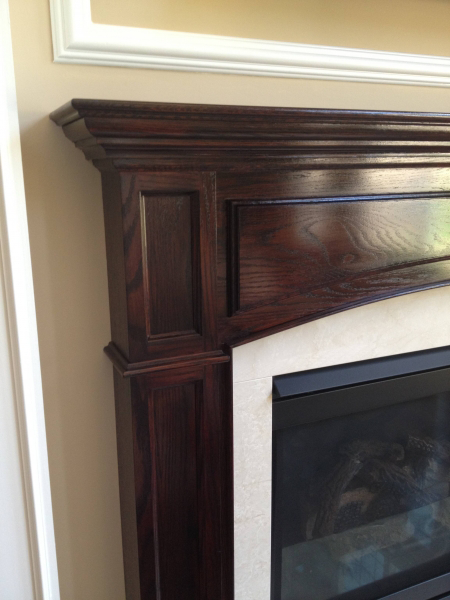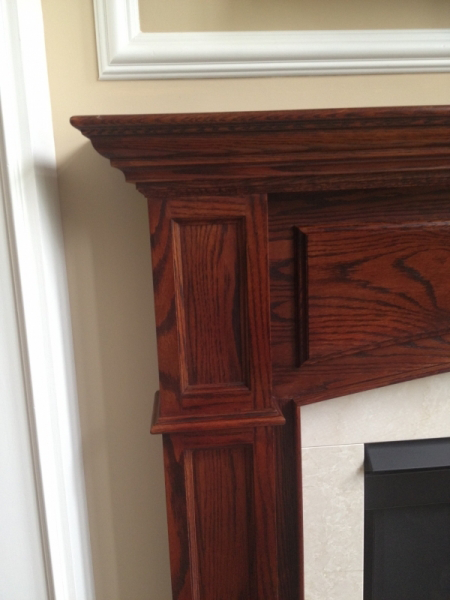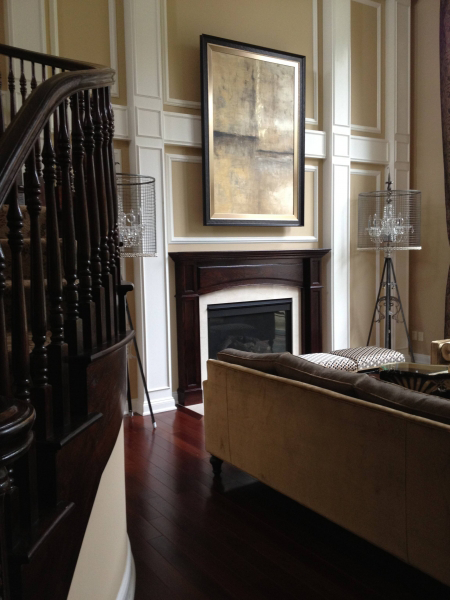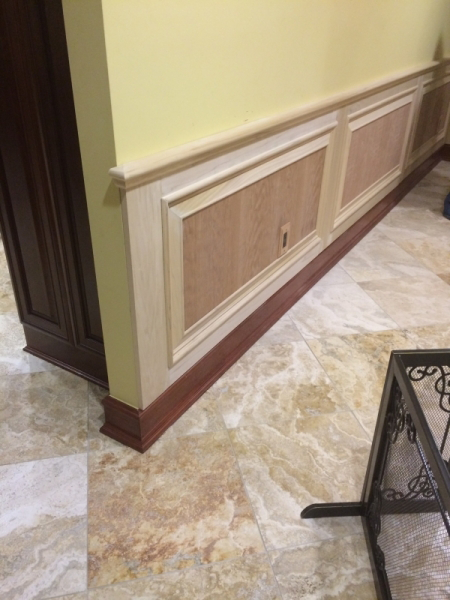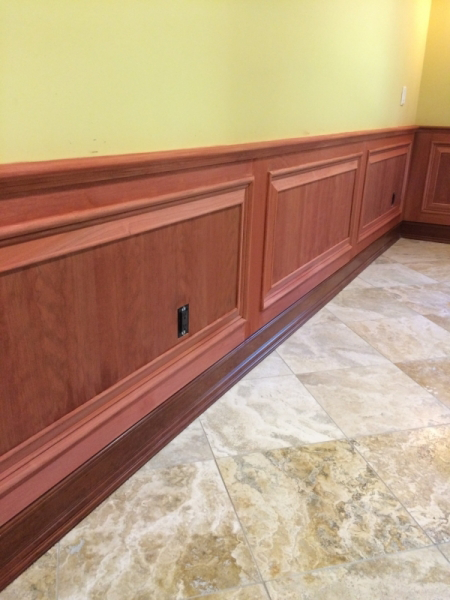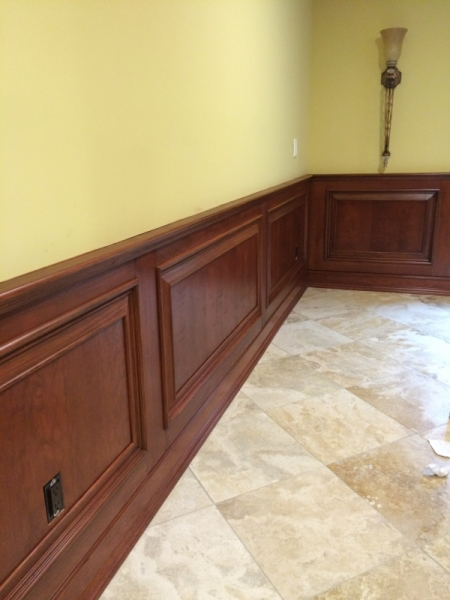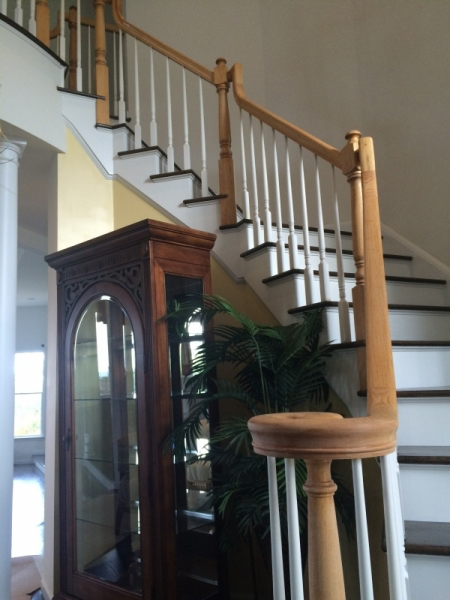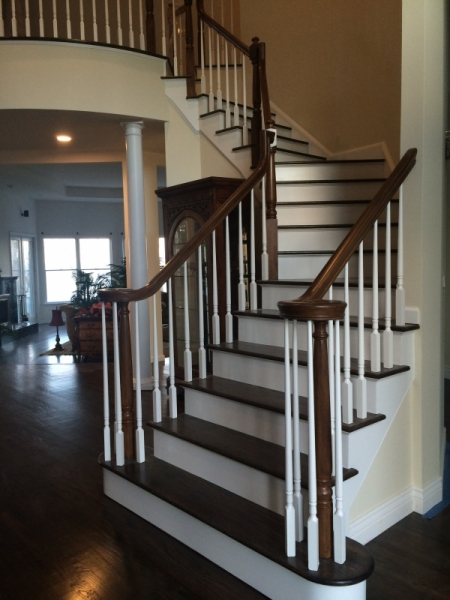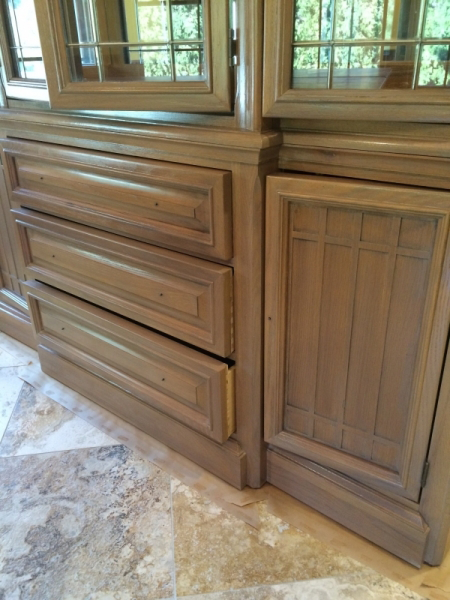I would describe the process of glazing as being the application of a translucent medium with added tint in order to enhance an existing finish. An example of a good glazing project would be this oak mantle which had been stained and polyurethaned but the color was wrong and it didn’t work well with the adjacent staircase, the floor or anything else for that matter.
The usual fix for this would be to either a) strip off the existing finish, stain a deeper color and then polyurethane or b) apply a gel stain finish. Gel stain can be useful but it is dificult to apply and achieve a good result. It is also limited by way of color. This time, using my own glaze and a combination of artist oils, I was able to match the mantle to the staircase giving it a rich and more fitting look without having to destroy what was there in the first place.
I also use a lighter glaze to produce a bleached finish. The following pictures are of a dining room set that was a golden oak finish but the customer was looking for something more contemporary to fit in with surrounding renovations.
Sheen is determined by the selection of the polyurethane or final coat used to protect and enhance the finish.
I would describe the process of glazing as being the application of a translucent medium with added tint in order to enhance an existing finish. An example of a good glazing project would be this oak mantle which had been stained and polyurethaned but the color was wrong and it didn’t work well with the adjacent staircase, the floor or anything else for that matter.
The usual fix for this would be to either a) strip off the existing finish, stain a deeper color and then polyurethane or b) apply a gel stain finish. Gel stain can be useful but it is dificult to apply and achieve a good result. It is also limited by way of color. This time, using my own glaze and a combination of artist oils, I was able to match the mantle to the staircase giving it a rich and more fitting look without having to destroy what was there in the first place.
I also use a lighter glaze to produce a bleached finish. The following pictures are of a dining room set that was a golden oak finish but the customer was looking for something more contemporary to fit in with surrounding renovations.
Sheen is determined by the selection of the polyurethane or final coat used to protect and enhance the finish


